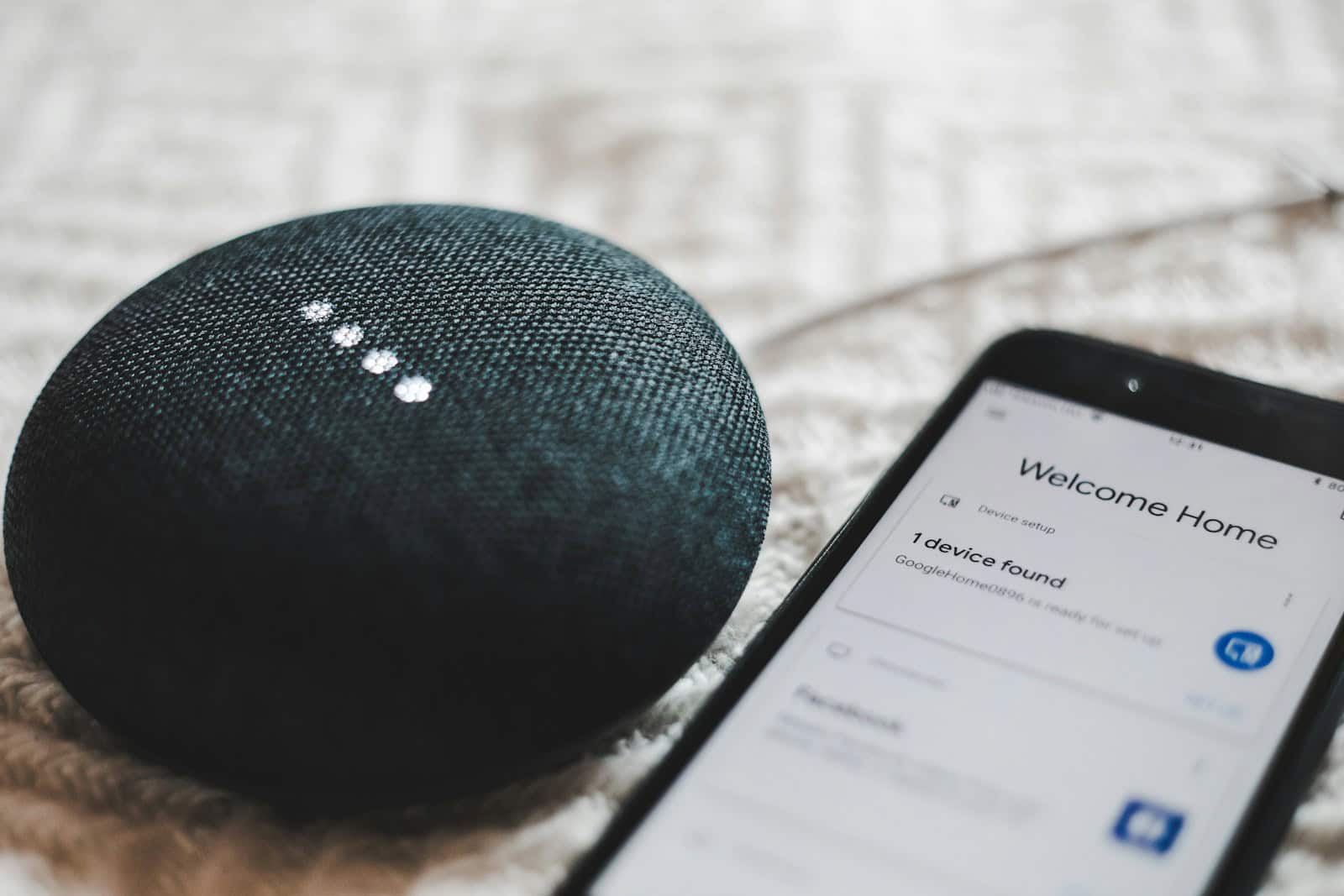The smart speaker rivalry between Amazon Echo and Google Home has entered a new phase in 2025, marked by evolving hardware, smarter AI assistants, tighter ecosystem integration, and growing concerns around privacy.
For consumers deciding which assistant belongs in their home, the answer depends on how they plan to use it—whether that’s for sound quality, smart home control, or voice-powered convenience.
Audio and Speaker Performance
Amazon’s Echo lineup, especially the 4th Generation Echo and the premium Echo Studio, continues to impress with fuller, room-filling sound. The Echo 4th Gen houses a 3-inch woofer and dual 0.8-inch tweeters, delivering deep bass and balanced mids, making it a strong pick for music lovers. On the other hand, Google’s Nest Audio focuses more on clarity and vocal definition. While it lacks the low-end punch of Echo devices, it provides a more neutral soundstage ideal for podcasts, audiobooks, and voice interactions.

Smarter AI Assistants
Amazon recently launched Alexa+, a major update that integrates generative AI into its assistant. This update allows Alexa to carry more natural, conversational dialogues, and remember context better. It’s available free for Prime members. However, it comes with a significant shift in how voice data is handled: all Alexa+ interactions are now cloud-processed by default. This has sparked renewed concerns over privacy, particularly for users sensitive to data handling practices.
Google Assistant, by contrast, has focused on reliability and ecosystem intelligence. Integrated deeply with Google services like Gmail, Calendar, Maps, and YouTube, it excels at context-aware commands and multitasking. Google’s AI feels more intuitive when you’re asking complex questions or navigating your digital life—especially if you’re already within the Android or Chromebook ecosystem.
Smart Home Integration
Amazon’s smart home prowess is hard to beat. Echo devices with built-in Zigbee and Matter hubs let users connect a wide range of smart home gadgets directly—no extra hub required. If you’re building a robust smart home with lights, locks, thermostats, and more, Echo offers flexibility and breadth of compatibility.
Google Home, however, is catching up. Nest devices now support Matter and Thread, allowing for broader interoperability across brands. Google’s strength lies in ease-of-use and automation through Google Home routines, but it still lags slightly in sheer device support compared to Amazon.
Smart Displays and Visual Interfaces
Amazon’s Echo Show line offers large, vibrant displays ideal for video calling, camera feeds, and recipe viewing. Models like the Echo Show 8 and Echo Show 10 combine strong speakers with dynamic screens. However, the interface has drawn criticism for being cluttered and pushing sponsored content.
Google’s Nest Hub lineup, particularly the Nest Hub Max, provides a cleaner, more photo-forward experience. Integration with Google Photos turns these into fantastic digital frames, and controls are intuitive. The smaller Nest Hub excels as a bedside or kitchen companion, though audio remains secondary.
Community Sentiment and User Feedback
Consumer feedback across forums like Reddit and YouTube comments points to a clear divide. Amazon Echo users often cite better hardware and smart home control, but express discomfort over Amazon’s recent shift to cloud-only voice processing. Google Home fans highlight Assistant’s superior natural language processing and tighter integration with daily-use apps, but occasionally mention inconsistent performance or delays in commands.
Final Verdict: Which One Should You Buy?
- Choose Amazon Echo if you’re building a feature-rich smart home, want the best sound quality for music, and don’t mind trading some privacy for convenience. Alexa+ adds conversational flair, and its compatibility is unmatched.
- Choose Google Home if you’re deep into Google’s ecosystem and want a more private, streamlined voice assistant. It’s the better pick for natural language interactions and day-to-day productivity.
As both ecosystems continue evolving with AI, Matter integration, and smarter routines, the choice increasingly comes down to personal priorities: audio vs. assistant intelligence, privacy vs. capability, and Amazon vs. Google ecosystems. In 2025, there’s no wrong answer—just the better fit for how you live.
Key Takeaways
- Amazon Echo offers more device options and better smart home integration than Google Home.
- Google Assistant responds more naturally to questions while Alexa has more wake word options.
- Your existing tech ecosystem (Amazon Prime or Google services) should influence which speaker you choose.
Overview of Smart Speakers
Smart speakers have transformed how we interact with our homes. These voice-activated devices serve as hubs for entertainment, information, and smart home control.
Evolution of Smart Home Assistants
Smart speakers first entered homes in 2014 when Amazon launched the original Echo with Alexa. Google followed in 2016 with Google Home (now Nest). Both companies have since expanded their product lines significantly.
The technology has improved rapidly. Early models could only answer basic questions and play music. Today’s versions can control thousands of smart home devices, manage calendars, make calls, and even detect emergency situations.
Sound quality has also advanced. The first speakers had mediocre audio, but newer models like Echo Studio and Nest Audio deliver rich, room-filling sound for music lovers.
Size options now range from tiny desk speakers to large displays with screens. Amazon currently offers six speaker models and five smart displays, while Google has a smaller but focused lineup.
Popularity and Market Share
Amazon’s Echo devices continue to lead the market, with Alexa becoming a household name. Google holds a strong second position with its Nest speakers and Google Assistant technology.
User preferences often split along clear lines. Many find Google Assistant easier to converse with naturally, while Alexa excels at smart home integration and offers more wake word options.
Price points vary widely. Basic models like Echo Dot and Nest Mini start around $50, while premium options can exceed $200. Sales spike during holiday shopping events when prices drop significantly.
User adoption continues to grow yearly. Nearly 40% of U.S. adults now own at least one smart speaker, with many households having multiple devices in different rooms. Many users report that these devices have become essential parts of their daily routines.
Design and Build Quality
The physical appearance and construction quality of Amazon Echo and Google Home devices reveal distinct design philosophies that affect both aesthetics and functionality. The choice between these smart speakers often comes down to how they look in your home and how well they’re built.
Physical Dimensions and Aesthetics
Amazon Echo devices typically feature a cylindrical design with fabric covering and a light ring that indicates when Alexa is listening. The standard Echo is sleek and slimmer in design, while the Echo Dot offers a more compact hockey puck shape. Amazon offers these devices in various colors to match different home decors.
Google Nest speakers (formerly Google Home) have a wider, more rounded shape. Some users note that early Google Home models resembled air fresheners. The newer Nest Audio has a more modern, pillow-like design with fabric covering and hidden LED lights.
Amazon currently provides more design options with six speaker models and five smart displays compared to Google’s more limited selection.
Material and Durability
Both companies use quality materials in their smart speakers. Amazon Echo devices feature fabric covers made from recycled materials, with plastic and metal components that feel sturdy and well-built.
The buttons on Echo devices provide tactile feedback and have proven durable over long-term use. The fabric covering can collect dust but is generally easy to clean with a soft cloth.
Google Nest speakers also use fabric coverings and have a solid feel. Their touch-sensitive controls lack the physical feedback of Echo buttons but maintain a cleaner look. The base has a non-slip material to prevent sliding on surfaces.
Both product lines are designed for indoor use and aren’t water-resistant. In terms of longevity, both brands have similar track records for durability when properly maintained.
Core Functionalities
Amazon Echo and Google Home devices offer similar basic features, but differ in how well they handle voice commands, play music, and control other devices in your home. Both systems can answer questions, set timers, and help manage your day.
Voice Recognition Capabilities
Both assistants excel at understanding commands, but they have different strengths. Google Assistant is generally easier to talk to and better at handling conversational questions. It remembers context from previous questions, making follow-up questions more natural.
Alexa requires more specific commands but offers unique features like detecting irritation in your voice. This can be helpful when you’re frustrated with a command not working properly.
A key difference is wake word options. Alexa supports multiple wake words like “Alexa,” “Echo,” “Computer,” or “Amazon.” Google devices are limited to “Hey Google” or “OK Google.”
Both systems can recognize different household members by voice, allowing for personalized responses and account access.
Music and Audio Performance
Sound quality varies across different models in both ecosystems. High-end speakers like the Echo Studio and Google Nest Audio deliver richer sound than their smaller counterparts.
The Echo’s bass performance is generally better, giving music more depth. However, Google’s speakers often provide clearer audio at higher volumes.
Music service support is extensive on both platforms. They work with popular options like Spotify, Apple Music, and their own services (Amazon Music and YouTube Music).
Music Service Compatibility:
- Alexa: Amazon Music, Spotify, Apple Music, Pandora, Deezer
- Google: YouTube Music, Spotify, Pandora, Deezer
Multi-room audio is available on both systems, letting you play synchronized music throughout your home.
Smart Home Integration
Both systems connect with thousands of smart home products, but there are some differences. Alexa supports slightly more devices overall and dominates in smart home capabilities.
Google Home works better with Google services and Nest products. It offers simpler setup for many devices and more intuitive voice commands for controlling them.
Both assistants can:
- Control lights, thermostats, and door locks
- Manage security cameras and video doorbells
- Run routines (multiple actions with one command)
Alexa’s “Skills” marketplace offers more specialized integrations than Google’s “Actions.” This gives Alexa an edge for users with specific or unusual smart home devices.
Setup processes differ slightly. Google’s interface is typically more user-friendly, while Alexa offers more customization options through its app.
Digital Assistant Features
Voice assistants form the core of smart speakers, handling everything from simple commands to complex questions. These features make or break the user experience with these devices.
Alexa vs Google Assistant
Amazon’s Alexa and Google Assistant have different strengths. Alexa excels at customization and accuracy, making it particularly good for smart home control. Users can add custom skills to extend its functionality.
Google Assistant provides more personalized information drawing from your Google account data. It answers general knowledge questions better thanks to Google’s search expertise.
Alexa can track Amazon packages and even detect irritation in your voice. It also has a whisper mode for late-night use when others are sleeping.
For day-to-day tasks like setting timers or playing music, both perform well. The choice often comes down to which ecosystem you already use.
Language Support and Multilingual Abilities
Both assistants support multiple languages, but their capabilities differ. Google Assistant supports more languages overall and handles accent variations better.
Alexa works in fewer languages but offers robust support for each one. Both allow bilingual households to switch between two languages without changing settings.
Google excels at translation services, offering real-time conversation translation between languages. This makes it valuable for multilingual families or language learners.
Alexa has improved its language recognition but still struggles more with accents and dialect variations compared to Google. For non-native English speakers, Google Assistant typically provides a more frustrating-free experience.
Continued Conversation and Natural Interaction
Natural conversation flow differs between these assistants. Google pioneered Continued Conversation, which keeps the microphone active briefly after responses. This allows follow-up questions without repeating the wake word.
Alexa now offers similar functionality but requires more precise phrasing at times. Google better understands context from previous questions, making multi-part queries feel more natural.
Both assistants can handle interruptions and corrections, though Google generally performs better when conversation takes unexpected turns.
Voice matching helps both assistants recognize different household members. Google supports up to six voices while Alexa can distinguish between different users for personalized responses to questions about calendars or shopping lists.
User Interface and Accessibility
Both Amazon Echo and Google Home devices offer distinct approaches to how users interact with their systems. The design choices affect how easily people can use these devices, especially those with special needs.
Mobile App Integration and Management
The Amazon Alexa app provides a clean interface with a dashboard that shows recent activities and quick access to skills. Users can easily set up routines with a step-by-step process that requires minimal technical knowledge.
The Google Home app uses a more visual approach with colorful icons and room-based organization. This makes it easier for users to manage multiple devices throughout their home.
For people with disabilities, both apps offer accessibility features. Google’s app works better with screen readers, while Alexa’s app includes more options for text sizing.
Parents will appreciate the parental controls in both apps. Google’s Family Link provides more detailed monitoring options, while Amazon’s Household profiles offer simpler setup.
Physical Button Layout and Functions
The Echo devices feature a minimalist design with just a few physical buttons. Most models include:
- Action button (to wake Alexa)
- Volume up/down buttons
- Mute button (with red light indicator)
Google Home devices take an even more streamlined approach. The Google Home Mini uses touch controls on its surface for volume and a physical switch for muting the microphone.
For users with mobility limitations, Echo devices offer more tactile feedback. The buttons are easier to identify by touch alone. This makes them better for handicapped users who need physical controls.
Both systems include light indicators to show when they’re listening, but Echo’s ring is more visible from different angles in a room.
Connectivity and Compatibility
Both Amazon Echo and Google Home devices offer various ways to connect with your smart home ecosystem. The way these devices communicate with your other gadgets can make a big difference in your daily experience.
Wi-Fi and Bluetooth Connectivity
Amazon Echo devices connect to your home network using Wi-Fi, supporting both 2.4GHz and 5GHz networks on newer models. This dual-band support helps reduce interference in crowded network environments. Echo devices also include Bluetooth capabilities that let you stream music from your phone or connect to external speakers.
Google Nest speakers also use Wi-Fi for their primary connection, with similar dual-band support. The Google Nest Audio provides clear sound through these connections, though some users note the Echo offers slightly better bass response.
A key difference is in range extender capabilities. Some Echo devices (like Echo Dot with Clock) can function as Eero WiFi extenders, helping improve your home network coverage while Google doesn’t currently offer this feature.
Third-Party App and Device Support
Amazon’s Alexa platform works with a massive number of third-party devices and services. Amazon works with more brands and devices than Google, giving it an edge for smart home enthusiasts. Alexa supports over 100,000 smart home products from thousands of brands.
Echo devices use “Skills” to add capabilities – these are like apps for your speaker. There are over 100,000 Skills available, ranging from games to home automation tools.
Google Home has fewer compatible devices but excels at integration with Google services. If you use Google Calendar, Gmail, or Android devices, the synchronization is seamless.
For shopping integration, Amazon’s devices naturally connect to Amazon’s shopping ecosystem. Google Home integrates with various shopping platforms but doesn’t have the same tight integration with a single marketplace.
Many Reddit users report that Alexa is generally better for smart home control, while Google Assistant might work better for calendar notifications and shopping lists.
Privacy and Security
Smart speakers collect a lot of data, raising important privacy concerns. Both Amazon Echo and Google Home have different approaches to protecting user information and giving people control over what happens to their data.
Data Encryption and User Privacy
Amazon Echo and Google Home both use encryption to protect user data, but they differ in how they handle privacy. Apple’s Siri may be the best option for privacy-conscious users, though Echo and Home remain more popular choices.
Google Home is connected to Google’s vast knowledge network, giving it powerful search capabilities. However, this means it collects more data. The company stores voice recordings and search history to improve its services.
Amazon’s Echo devices collect sensitive information including address, location, photos, videos, and audio data. Echo devices with cameras, like Echo Show, raise additional privacy concerns.
Both companies have admitted that employees sometimes listen to recordings to improve voice recognition. This practice has worried many users who didn’t realize humans might hear their conversations.
User Control Over Data
Users have options to manage their privacy with both devices. Amazon, Google and Apple all allow users to opt out of having employees review recordings and to delete voice history.
Google offers better transparency about collected data. They provide a dashboard where users can see what each Google service knows about them. This makes it easier to understand what information is being stored.
Both systems include mute buttons that physically disconnect the microphones. This feature provides peace of mind when users want guaranteed privacy.
Users can delete their voice recording history on both platforms:
- Echo: through the Alexa app or Amazon website
- Google Home: through Google account settings
Regular privacy audits help ensure unwanted data isn’t being collected. Many experts recommend reviewing privacy settings every few months.
Price and Value for Money
When comparing Amazon Echo and Google Home devices, cost considerations and after-purchase support play key roles in determining overall value.
Cost Comparison
Amazon offers a wider range of Echo speakers at various price points compared to Google’s Nest lineup. The Echo Dot is available for under $50 and provides better audio quality than Google’s comparable Nest Mini. This makes it an excellent entry-level choice for budget-conscious buyers.
Google’s smart speakers typically start at slightly higher prices. However, both companies frequently discount their devices during sales events like Black Friday and Prime Day.
The Echo Show 5 costs about $85, making it cheaper than Google’s lowest-priced smart display. This price advantage extends to most Amazon display models compared to similar Google options.
For premium sound, both companies offer higher-end models at comparable prices. These devices target audiophiles willing to pay more for better sound quality.
Warranty and Support Services
Amazon and Google both offer one-year limited warranties on their smart speakers, covering manufacturing defects. Extended warranties are available for purchase with either brand.
Amazon’s customer service is known for being highly responsive, often replacing devices even slightly outside warranty periods. Their support team can be reached through multiple channels including phone, chat, and email.
Google provides solid technical support through their help center and community forums. Their troubleshooting guides are comprehensive and easy to follow.
Both companies regularly update their devices with new features at no extra cost. These updates add value long after purchase and keep older models relevant.
Neither company charges subscription fees for basic voice assistant functions, though premium music services may require separate subscriptions.
Ecosystem and Brand Loyalty
When choosing between Amazon Echo and Google Home, users often become loyal to one ecosystem based on device integration and compatibility. This choice affects how well smart speakers work with other products in their homes.
Integration Within Brand Ecosystems
Amazon Echo devices work seamlessly with other Amazon products. If you already use Amazon Prime, Fire TV, or Ring doorbells, Echo speakers provide natural extensions to your existing setup. The Alexa app centralizes control of all compatible devices in one place.
Google Home speakers integrate perfectly with other Google services like Gmail, Calendar, and YouTube. This makes checking your schedule or watching videos on compatible screens very easy. The Google Home Mini offers better sound quality than similarly sized Echo Dots, according to some reviews.
Users tend to stick with their chosen platform. Studies show that customers who buy one smart speaker usually stay brand-loyal to either Google Home or Amazon Echo for future purchases.
Cross-Compatibility Between Different Brands
Amazon’s Echo devices work with a wide range of smart home products. Alexa is compatible with numerous smart devices, giving it an edge in connecting to third-party products. This flexibility helps users build custom smart home setups without being locked into specific brands.
Google Home has fewer compatible devices but excels at natural interactions. Thanks to Google’s search background, its assistant is better at natural language processing compared to Alexa. This makes conversations with Google devices feel more natural.
When comparing ecosystems, consider:
- Current devices: What tech do you already own?
- Future plans: Will you expand your smart home?
- Preferred services: Which company’s services do you use daily?
Both platforms continue adding new compatibility features, but choosing the ecosystem that matches your existing tech makes for a smoother experience.
User Experience and Reviews
When choosing between Amazon Echo and Google Home, real-world feedback from both everyday users and tech experts provides valuable insights into how these devices perform in actual homes.
Customer Satisfaction
Amazon Alexa users often praise its user-friendly interface and wide range of skills. Many appreciate how Alexa connects smoothly with various smart home devices.
The wake word options with Alexa give users more flexibility. You can choose between “Alexa,” “Echo,” “Computer,” or “Amazon” to start commands, which many find helpful in different settings.
Google Home users typically highlight the assistant’s conversational abilities. The system feels more natural to talk to and better understands context in questions.
Smart home control through the Google Home app receives high marks from users. The app layout puts all devices on the home screen, making quick adjustments easy.
Both systems get mixed reviews on privacy concerns. Some users report turning off microphones when not in use or being careful about what information they share.
Expert Reviews
Tech reviewers often note that Google Assistant is easier to talk to than Alexa. The natural language processing feels more fluid and handles follow-up questions better.
Sound quality comparisons generally favor Amazon Echo slightly. The Echo speakers deliver better bass response, while Google Nest Audio earns praise for clarity.
For smart home integration, experts typically recommend Alexa. It works with thousands of smart devices, offering more compatibility than Google Home.
Display-equipped models from both companies receive positive reviews. Experts point out that Google’s visual responses often contain more useful information, while Amazon’s screens work better for video calls.
After years of testing, reviewers note that both systems have improved significantly but remain similar yet vastly different in their approach to home assistance.
Future Prospects and Updates
Both Amazon Echo and Google Home are evolving rapidly with new features and capabilities planned for 2025 and beyond. These smart speakers continue to compete for market dominance with exciting innovations on the horizon.
Planned Updates and Roadmaps
Amazon’s Echo lineup will receive several key updates in late 2025. The company has announced improved voice recognition that can distinguish between up to six different household members. This enhancement will allow for more personalized responses based on who is speaking.
Google Home devices will focus on improved integration with smart home products. Their roadmap includes better compatibility with third-party devices and a simpler setup process. This addresses a common pain point for many users.
Both companies plan to enhance privacy features. Amazon will add more granular controls for voice recordings. Google is working on local processing for basic commands, reducing the need to send data to the cloud.
Security updates will be a priority as well. New encryption standards and regular security patches will help protect user data from potential threats.
Potential for Future Expansions
The market for smart speakers continues to grow. Amazon currently holds about 70% of the market share, while Google captures roughly 24%. Both companies are exploring new ways to expand.
Amazon plans to introduce more specialized Echo devices for specific rooms and purposes. These might include bathroom-safe models and outdoor versions for patios and yards.
Google is working on better cross-device experiences. Their goal is seamless transitions between phone, speaker, and display. This would allow users to start a task on one device and finish it on another.
Both companies are investing in AI advancements. This includes:
- More natural conversations
- Better context awareness
- Improved language understanding
- Faster response times
Health monitoring features are another frontier. Future devices might listen for coughs, detect falls, or monitor sleep patterns with user permission.
Frequently Asked Questions
Both Amazon Echo and Google Home have different strengths and weaknesses in key areas like sound quality, intelligence, and smart home integration. These comparisons can help you decide which device fits your needs better.
How does the sound quality compare between Amazon Echo and Google Home devices?
Amazon Echo devices generally offer better audio performance for their size. The 2nd generation Echo has better built-in mics for picking up quiet or distant audio compared to Google devices.
For music lovers, Amazon’s speakers typically provide superior sound quality. This becomes especially noticeable in larger rooms or when playing bass-heavy music.
Which is more intelligent: Alexa or Google Assistant?
Google Assistant often outperforms Alexa in answering general knowledge questions. This is due to Google’s powerful search engine integration and vast knowledge database.
Alexa has unique capabilities like detecting irritation in your voice and tracking Amazon orders. However, Google Assistant tends to understand natural speech patterns better.
Google Assistant also excels at maintaining conversation context. It remembers previous questions, making follow-up queries more natural and effective.
What are the main disadvantages of using Amazon Echo compared to Google Home?
Amazon Echo devices can sometimes struggle with understanding natural language patterns that Google handles easily. They may require more specific command phrasing.
Echo devices lack the same level of calendar and shopping list integration that Google Home offers. This makes Google more useful for managing daily schedules.
Privacy concerns exist with Echo devices since Amazon stores voice recordings. While both companies collect data, some users feel uncomfortable with Amazon’s approach.
Is the Amazon Echo Dot a superior choice over the Google Nest Audio?
The Echo Dot offers better value at its price point with stronger sound performance for its size. It connects to a wider range of smart home devices than the Nest Audio.
Google Nest Audio provides clearer voice assistant responses and more accurate voice recognition in noisy environments. This makes it more reliable for daily use.
The decision depends on your priorities. Echo Dot works better for smart home control, while Nest Audio excels at information retrieval and voice clarity.
In what ways do the features of Google Nest Hub differ from those of Amazon Echo?
Google Nest Hub includes a display screen that shows visual information alongside voice responses. Echo devices without screens can only provide audio feedback.
The Nest Hub offers superior video calling features and YouTube integration compared to Echo devices. This makes it better for entertainment purposes.
Nest Hub includes sleep tracking technology that monitors sleep patterns without requiring a wearable device. Echo devices lack this capability.
How does the user experience with Amazon Echo contrast with that of Google Nest Mini regarding smart home integration?
Amazon Echo dominates in smart home control with compatibility for more devices and easier setup processes. Commands for controlling lights, thermostats, and other smart devices often work more reliably.
Google Nest Mini offers a more intuitive interface for grouping and managing multiple smart devices. Its room-based organization system feels more natural to many users.
Echo devices provide more customization options for routines and automation. Users can create more complex chains of actions triggered by simple voice commands.







